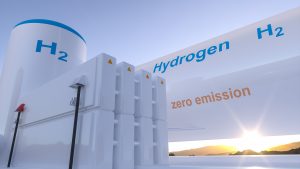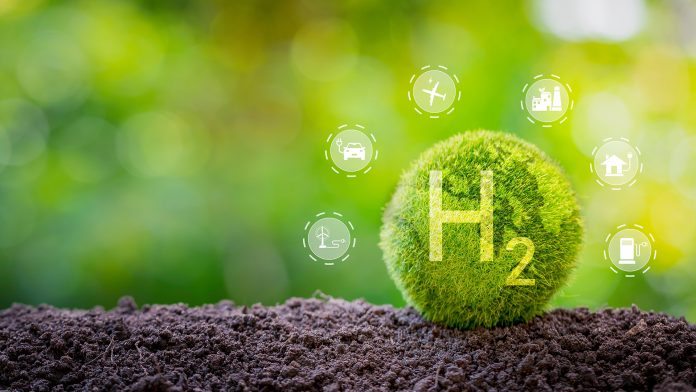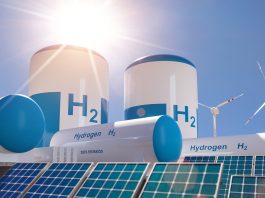Researchers from the University of Twente have developed a new composite material that could potentially be used for green hydrogen production without the use of rare and precious metals.
Green hydrogen is an efficient way to store energy for long periods of time, regarded as the energy carrier of the future. Because of this, efficient green hydrogen production is essential.
Typically, the most common way to produce green hydrogen is through the electrolysis of water, however, with current electrolysis methods, a lot of rare and expensive materials are required for the process to be efficient enough.
To overcome this, researchers from the University of Twente have developed a new composite material that outperforms the individual compounds by one to two orders of magnitude. The composite consists of several earth-abundant elements that could be potentially used for efficient hydrogen production.
The work, ‘A High-Entropy Oxide as High-Activity Electrocatalyst for Water Oxidation,’ is published in the journal ACS Nano.
The search for an efficient electrocatalyst for green hydrogen production
“Currently, the most efficient electrolysers contain platinum and iridium, which are needed for the electrodes on which the hydrogen and oxygen gas are produced from water. However, platinum and especially iridium are too rare. That’s why we’re constantly looking for electrode materials made from more abundant resources, which also can be used as efficient and stable electrocatalysts,” explained UT-researcher Chris Baeumer.
The team found a new material that will assist with green hydrogen production – a compound containing five different transition metals. Individually, these metals are only moderately active when used as a catalyst, however, Baeumer and his team found the combined activity outperforms the individual compounds by a factor of up to 680. This discovery shocked the team.

“We expected that the stability compared to traditional composites would be enhanced, but when we started testing, it soon turned out that the activity was much higher too. In collaboration with our partners from Karlsruhe (Germany) and Berkeley (US), we found that the individual transition metals may ‘help’ each other to make the combined material better than the sum of its parts in a so-called synergy-effect.”
The new material still needs to be tested on the industrial scale
However, the new findings do not mean that we can directly replace all electrodes with this new material. Combining the five different materials is complex, and the activity has only been tested in a lab-environment.
“We’re comparing a newly discovered composite to materials optimised for large-scale production, meaning that our new material still needs to be tested on the industrial scale. However, with some tweaking and further research, this combination of transition metals has the potential to outperform currently available alternatives,” explained UT-postdoc Shu Ni, who is leading these future developments for materials optimisation.









